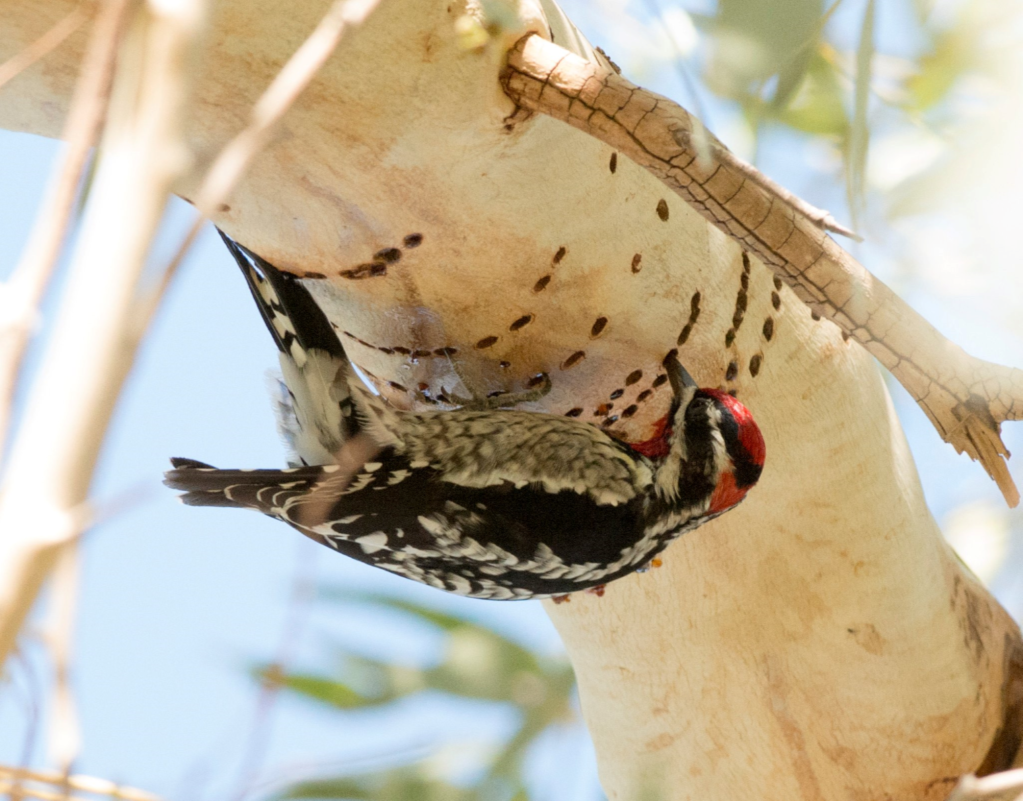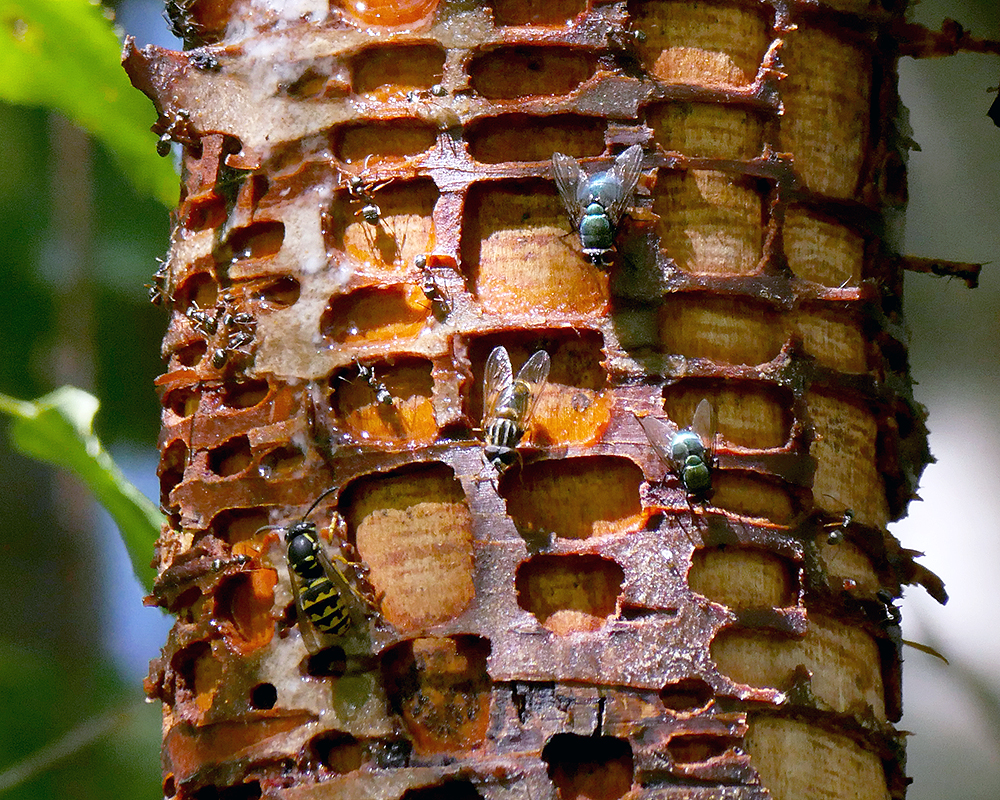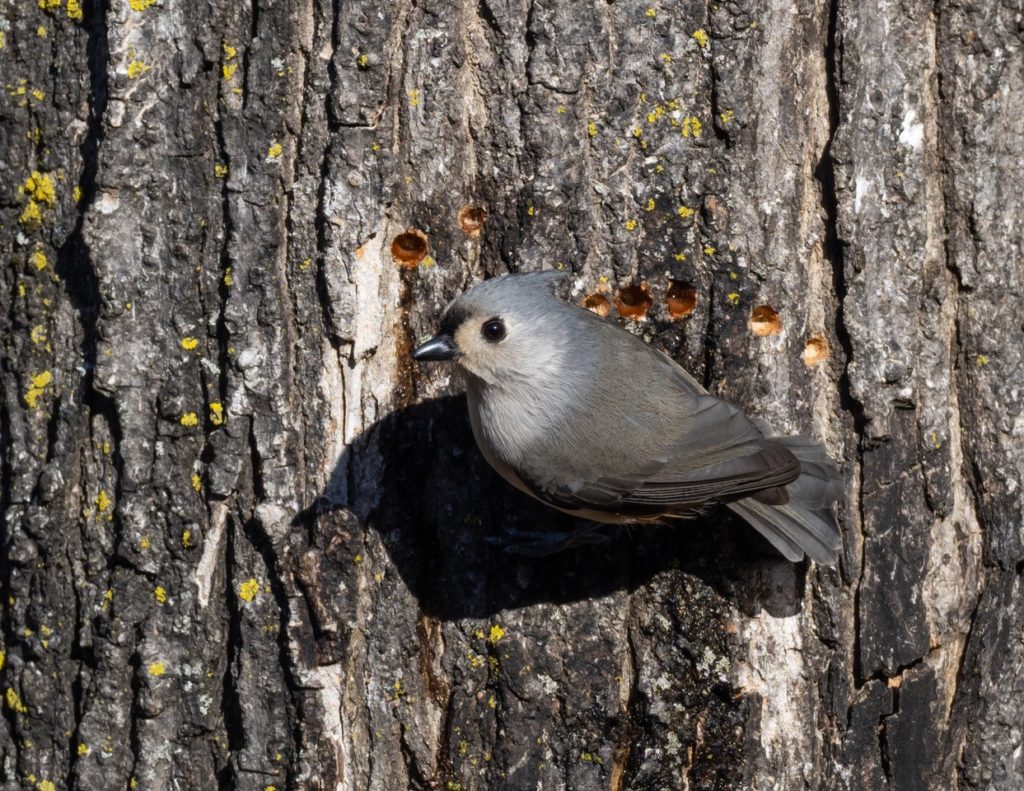The ‘troublesome’ Sapsucker is a Good Neighbor to ‘double-dipping Forest Dwellers.
by Gillian Martin

Photo by Sandrine Biziaux Scherson
Throughout the year sapsuckers drill wells for sap in healthy and stressed trees. In early spring, the bird first drills narrow, circular wells into the tree’s xylem—the inner part of the trunk—to feed on sap moving up to the branches. After the tree leafs out, the sapsucker begins making shallower, rectangular wells in the phloem. This is the part of the trunk that carries sap down from the leaves. These phloem wells are continually maintained with fresh drilling, so the sap will continue to flow. Here’s a cool video of the yellow-bellied sapsucker, an eastern species, at work. Look for the arrival of the female (the second bird) to see how she dips her insect-filled bill into sap. It’s safe to guess she has young to feed.
Sapsuckers tend to choose sick or wounded trees for drilling their wells, and they choose tree species with high sugar concentrations in their sap. In addition to sap, sapsuckers consume cambium and opportunistically pick insects trapped in sap. The greatest damage to trees is done on warm winter days and in spring just before migration.

Though arborists understandably bemoan the sapsucker’s injury to trees, the species’ contribution to forest ecosystems is significant. By drilling sap wells for their own consumption, the birds also provide a food source for other birds, insects and even mammals. All are free to ‘double dip’ as much as they want.
Does the sapsucker kill the tree? Yes, sometimes, especially if the it inflicts repeated injury to the trunk or a branch. Death is a certainty if the wells girdle the entire circumference. Sad, you think? Well, not so fast! Assuming the tree is in a healthy forest, woodland, or riparian area, and assuming it is left to die in place, its death commences a new and commendable life. It benefits many forest organisms in ways amply described by many biologists and foresters. Ultimately, its nutrients are recycled into soil, and new plants emerge in its place. This is Nature’s plan. Unfortunately sapsucker wells can be costly to orchard growers who suffer loss of fruit production when trees are injured. Commercial wood producers also pay a heavy price in stained or distorted wood.

Photo by Paradise Birding
Several deterrents can be used and often have at least partial success. There really is no sure way to stop a bird from foraging on a tree. Sight and noise deterrents can be found on-line. Some, especially malar strips, have been reported to work quite well. Plastic owls are usually ineffective. Birds quickly learn they are not a threat.
Care must be taken when installing plastic netting, wire mesh, or other material to cover bark or fruit trees. Plastic netting can trap birds and have a deadly outcome. Avoid covering bark any longer than necessary. Bark needs sunlight and air. Furthermore, make sure the covering is tightly stretched in place. Loosely secured material, when whipped by strong wind, can break free and harm bark or snap small branches. Sticky products are not safe deterrents to birds and can be lethal. By struggling to get free, birds can break wings and legs and injure themselves in other ways. They are inhuman even for those for which they are intended. All native birds are legally protected, so shooting them and using toxic substances is illegal.
Since sapsuckers are unable to recognize our personal or commercial interests, let’s continue to seek safe, creative ways to live side by side with them. And if you are fortunate to observe a sapsucker, you might consider the millions of years it took to shape its form and function so that it can be in service to the health of our planet.



Connect
Connect with us on the following social media platforms.